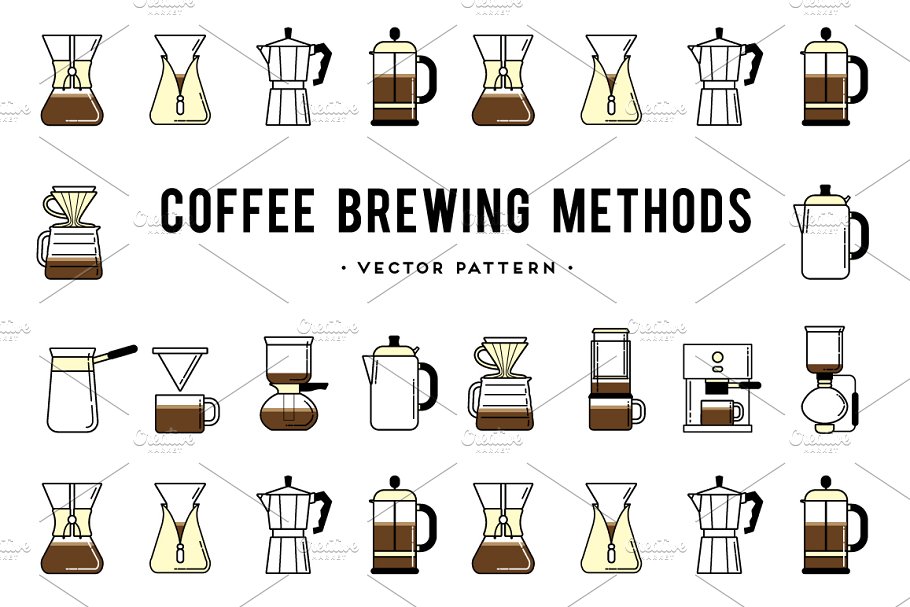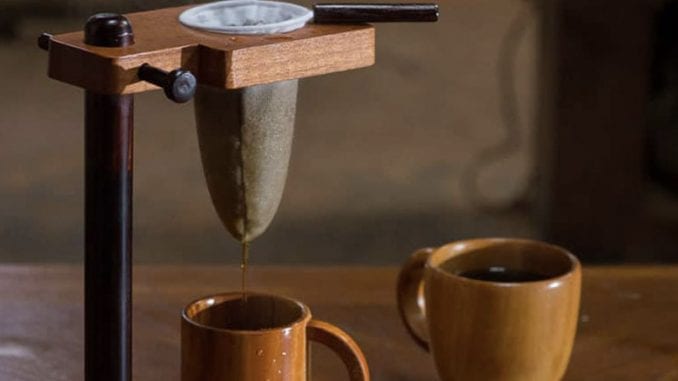The Ultimate Contrast of Popular Coffee Brewing Methods for Home Baristas
The Ultimate Contrast of Popular Coffee Brewing Methods for Home Baristas
Blog Article
The Scientific Research Behind Coffee Brewing: How Temperature and Time Affect Your Beverage
Comprehending the scientific research behind coffee developing reveals that temperature level and time are not mere variables but pivotal aspects that dictate the beverage's flavor profile and general high quality. As we check out the nuances of these components, the question emerges: just how can one effectively equilibrium temperature level and time to accomplish that ideal brew?
The Chemistry of Coffee Removal
The chemistry of coffee extraction looks into the detailed procedures that change raw coffee beans right into the aromatic beverage delighted in worldwide. This makeover mostly involves the solubility of different substances present in the beans, which are influenced by variables such as grind dimension, water high quality, and the developing technique utilized.
During the brewing procedure, warm water serves as a solvent, extracting soluble substances, consisting of caffeine, sugars, acids, and lipids, from the coffee grounds. Each compound contributes to the taste account, scent, and body of the last beverage. Acids are liable for brilliant and tasty notes, while oils contribute to an abundant mouthfeel.
The first phases of brewing extract acids and sugars, leading to an enjoyable acidity, while extended removal can lead to bitterness due to over-extraction of undesirable substances. Understanding these chemical communications is important for optimizing developing strategies, as the balance in between extraction time and water temperature level can substantially influence the overall top quality of the coffee.
Perfect Brewing Temperatures
Finding the best brewing temperature is necessary for opening the complete potential of coffee flavors and aromas - coffee brewing methods. Research study shows that the ideal variety for developing coffee exists in between 195 ° F to 205 ° F(90 ° C to 96 ° C) Within this array, the removal process properly dissolves the preferable soluble compounds in coffee beans, leading to a well balanced and tasty cup
Developing at lower temperatures, such as below 195 ° F(90 ° C ), may cause under-extraction, yielding a weak and acidic brew with muted flavors. Alternatively, brewing at temperatures exceeding 205 ° F(96 ° C) can lead to over-extraction, generating a bitter and rough taste due to the extreme dissolution of unfavorable substances, such as tannins.
Furthermore, the perfect developing temperature can vary depending on the coffee bean type and roast degree. Lighter roasts usually profit from slightly greater temperatures to enhance their intricate taste accounts, while darker roasts might be much better suited to lower temperature levels to alleviate anger.
Inevitably, preserving accuracy in brewing temperature levels is critical for achieving a harmonious balance of flavors, making certain that every cup of coffee delivers a gratifying sensory experience.
Influence of Developing Time
Developing time plays a pivotal duty in establishing the taste account and general top quality of coffee. The removal process, which influences the preference, aroma, and body of the beverage, is greatly based on how long the coffee premises touch with water. Shorter developing times can result in under-extraction, leading to a sour or weak taste, as insufficient soluble compounds are liquified. Conversely, prolonged developing can lead to over-extraction, where unwanted compounds are released, causing a bitter or astringent taste.
Ideal brewing time varies depending upon the technique utilized and the grind size of the coffee. For instance, a French press generally requires concerning 4 mins, while espresso extraction is normally finished within 25 to 30 secs. It browse around these guys is vital to adjust developing time in combination with various other variables, such as water temperature and coffee-to-water proportion, to accomplish the desired flavor account.
Understanding the effect of developing time enables coffee enthusiasts to fine-tune their developing techniques, inevitably enhancing the sensory experience of their cup (coffee brewing methods). With mindful focus to this variable, one can open the full potential of the coffee, revealing its one-of-a-kind characteristics and nuances
Brewing Approaches and Their Results

For circumstances, approaches like French press and chilly brew enable a much longer steeping time, causing a fuller body and robust flavor due to raised removal of oils and soluble solids. On the other hand, espresso brewing makes use of high pressure and a shorter extraction time, generating a concentrated shot that emphasizes extreme flavors and a rich crema.
Pour-over techniques, such as Chemex or V60, use a more regulated extraction process, enabling the maker to manipulate flow price and water distribution, which can boost brightness and clarity. Percolation approaches cycle water via the coffee grounds several times, leading to a stronger, frequently bitter taste.
Finally, the usage of paper filters versus steel filters can also impact the final taste; paper filters generally generate a cleaner mug by capturing oils and fine fragments, while metal filters permit even more oils read more to go through, adding to a fuller mouthfeel - coffee brewing methods. Understanding these subtleties can elevate the coffee experience substantially
Tips for Improving Your Brew
A well-executed mixture can change even the most basic coffee into a remarkable experience. Grind the beans simply prior to making to maximize quality, making certain the work size matches your developing technique-- coarser for French press and finer for espresso.
Water quality plays a critical function; usage filtered water totally free from impurities. The ideal brewing temperature varies in between 195 ° F and 205 ° F(90 ° C to 96 ° C ) Also hot can burn the coffee, while as well trendy might under-extract flavors.
Timing is just as important. For immersion methods, soaking for 3 to 5 mins is optimum, whereas drip approaches normally take around 5 minutes. Experiment with mixture times to discover your preferred stamina.

Final Thought
In summary, the detailed partnership in between temperature and time is paramount in the coffee brewing procedure. Abiding by ideal developing temperature levels between 195 ° F and 205 ° F, together with accurate timing tailored to each approach, ensures the desired flavor profile is achieved. Recognizing these scientific concepts empowers individuals to improve their developing methods, inevitably resulting in a more well balanced and satisfying coffee experience. Proficiency of these variables is important find out for any coffee lover seeking quality in their beverage.
Recognizing the science behind coffee developing discloses that temperature level and time are not simple variables but crucial elements that dictate the drink's taste account and general top quality. Recognizing these chemical interactions is essential for optimizing brewing methods, as the equilibrium in between removal time and water temperature level can considerably affect the overall top quality of the coffee.Developing time plays a critical function in determining the taste profile and overall quality of coffee. By focusing on these aspects-- bean high quality, grind dimension, water temperature level, steeping time, and ratio-- you can boost your coffee brewing procedure, resulting in a regularly remarkable mug.
In summary, the intricate partnership in between temperature level and time is extremely important in the coffee developing procedure.
Report this page